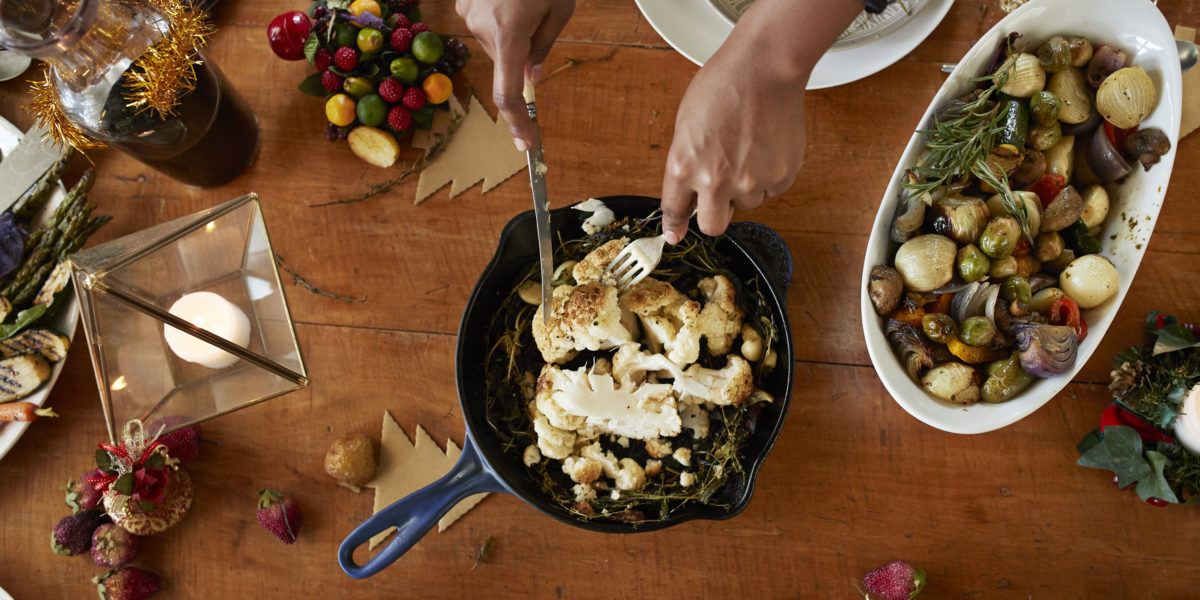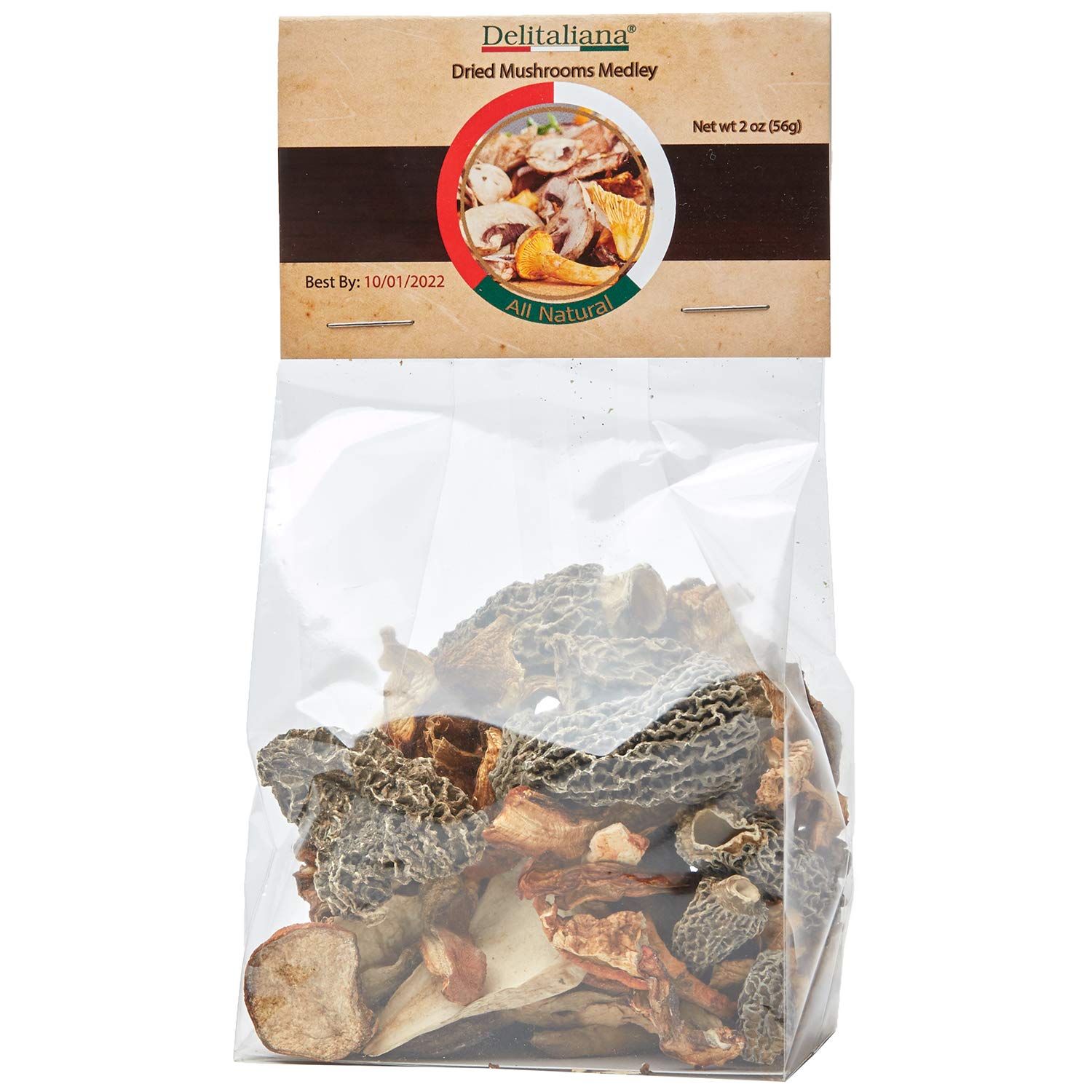Simple Swaps to Make Your Holiday Favorites Vegan- and Vegetarian-Friendly
Simple ideas to make meals everyone can enjoy, without sacrificing flavor and texture.

Whether or not you practice a vegan or vegetarian lifestyle, or you’re cooking for friends and family who are sans-meat, it can be difficult to find good alternatives to your favorite dishes. Since high school, both of my best friends have been vegan. When I cook for them, finding ways to imitate the glaze that comes from brushing scones with heavy cream or imparting flavor into a pan sauce without chicken or beef broth has been difficult.
Over time, I have found solace in reading miscellaneous blog posts, spending hours researching vegan cookbooks, attempting new ways to replace eggs, cream, and butter with my vegan comrades, and messing with flax and chia seeds.
What is the result of my years of research, might you ask? The ability to share with you some simple swaps to use throughout the holiday season as you thoughtfully prepare dishes that are delicious and plant-based without sacrificing flavor and texture. From broth substitutes to butter swaps to unique ways of imitating egg whites, there are so many advancements in the vegan and vegetarian world that allow for easy home cooking.
To kick it off, there are a few items you’ll want to ensure you have in your pantry. The basic ingredients for pulling out vegan-friendly subs at any time in the kitchen are:
- Dried mushrooms
- Canned chickpeas
- Chia seeds
- Flax seeds
- Coconut milk
- Nutritional yeast
- Sunflower oil
- Margarine
Now that you’re stocked with a few essentials, let’s get into how to use them in your kitchen this holiday season and beyond.

Amazon
We only recommend things we love. If you buy something through our site, we might earn a commission.
My newest discovery in making vegetarian dishes is making stock out of dried mushrooms. You can make vegetable stock with onions, carrots, celery, and other root veggies, though I feel it always is missing that depth of flavor that you get from dark beef stock. While making a mushroom ragoût recently, I tried a new approach instead of using wine and broth—mostly because I didn’t have any—and incorporated this dried mushroom broth into the mix.
Start by heating water in a pot or tea kettle and adding ¾ cup of dried mushrooms to a heatproof bowl. Once the water is boiling, pour 4 cups of water over the mushrooms, place a plate over the bowl or a piece of plastic wrap to trap the heat. Let it sit for 15 to 20 minutes and remove the mushrooms from the liquid—voila mushroom broth! I keep the mushrooms after removing, chop them up, and use them in various dishes from lasagna to salad. With the broth, you can use it in stuffing, as the base for flavorful gravies, to braise greens, and more!

Maren Ellingboe
Chickpeas are a great secret ingredient and can be used for far more than as a base for delicious hummus. The liquid from a can of chickpeas is called aquafaba and, when you beat it with a whisk or in the bowl of an electric mixer, it comes to form peaks like meringue or whipped egg whites. Use whipped aquafaba as meringue topping on pies, for cookies, or in other desserts that call for egg whites whipped to stiff or soft peaks. Make use of the chickpeas by crisping them or making them into a side with saffron and tomatoes so nothing goes to waste.
Now let’s dive into the seeds that really put in overtime in vegan and vegetarian dishes: chia and flax. The opportunities to use these little seeds are endless. Just a tablespoon of chia seeds can yield a jiggly thickened delicious dish—think chia pudding, chocolate mousse, smoothies, popsicles, or in gravies and sauces for thickness. Flax seeds, outside of being totally nutritious, are the base for a very important vegan baking ingredient known as the flax egg.

Amazon
To make a flax seed egg, start by grinding flax seeds into a fine meal (or buying them already ground), combine 1 Tbsp. flax meal with 2½ Tbsp. water and let sit for five minutes to thicken. (One flax egg, per the prior measurements, equals one regular egg for recipe conversions.) My grandma’s favorite way to use flax eggs when we know a few vegans will be in attendance at holiday dinners is in cornbread, though I love to use them in pancakes or waffles for brunches. They make a great sub for eggs in casseroles, pies, and more.
For a few more vegan and vegetarian alternatives, I always keep full-fat canned coconut milk on hand; it makes for a great substitute for heavy cream or milk in almost any recipe. Nutritional yeast adds a cheesy flavor to dishes like mashed potatoes or roasted broccoli. When it comes to butter (my absolute favorite ingredient that I hate having to omit), I’ve found that certain kinds of margarine are better than others. Earth Balance always delivers on flavor and comes in stick form to make conversions easier, while all-vegetable shortening brings forth a similar flakiness in pie crusts. Just be sure to chill your shortening in cubes (they also sell shortening in sticks) to ensure it doesn’t get too soft during rolling and handling.
If you’re ever lost while trying to find a dish that fits into a vegan or vegetarian diet, do not fear! Below you can find five vegan cookbooks that I’ve read, referenced, or been referred to as I’ve explored the vast world of meat and dairy alternatives.
- Love is Served
- Food 52 Vegan Cookbook
- Broke Vegan: Over 100 Plant-Based Recipes That Don’t Cost The Earth
- Celebrate: Plant Based Recipes for Every Occasion
- Vegan: The Cookbook

Cafe Gratitude
Search All of Sunset’s Recipes
Read the Current Issue Here!
Get one year of Sunset—and all kinds of bonuses—for just $29.95. Subscribe now!

